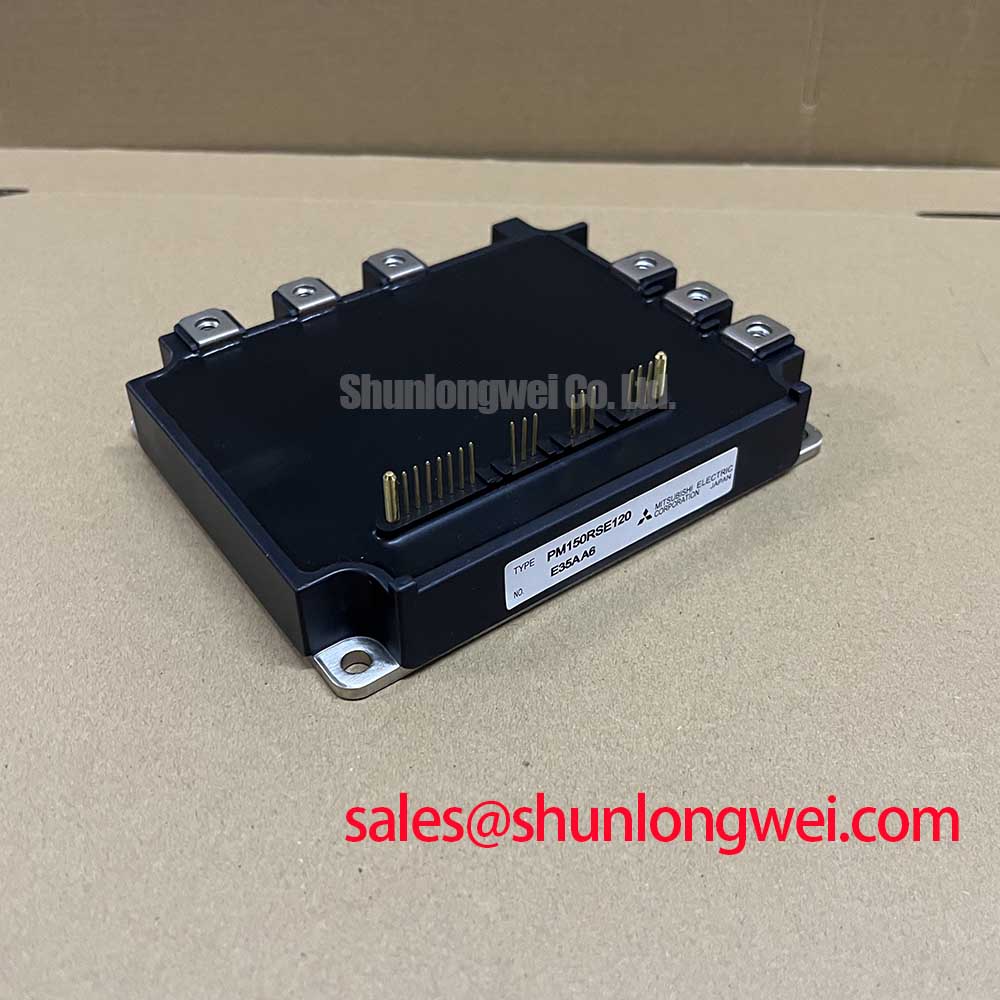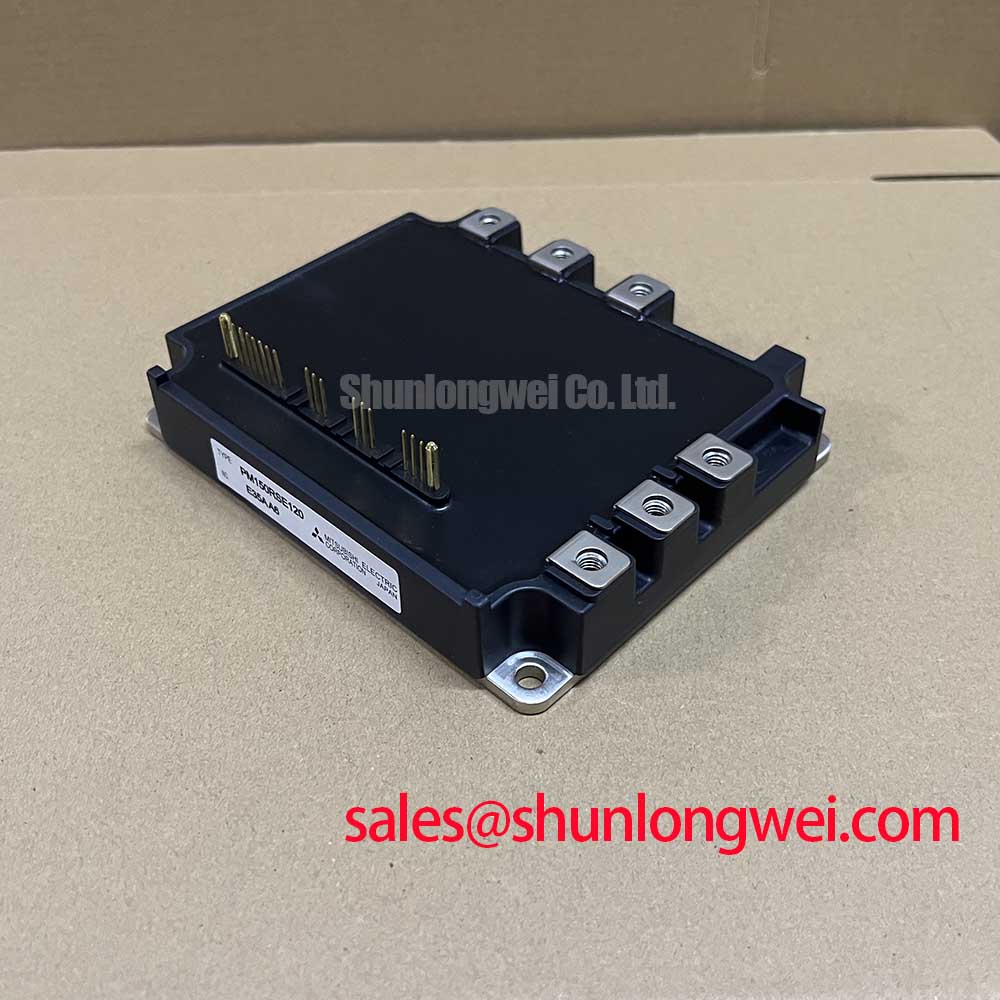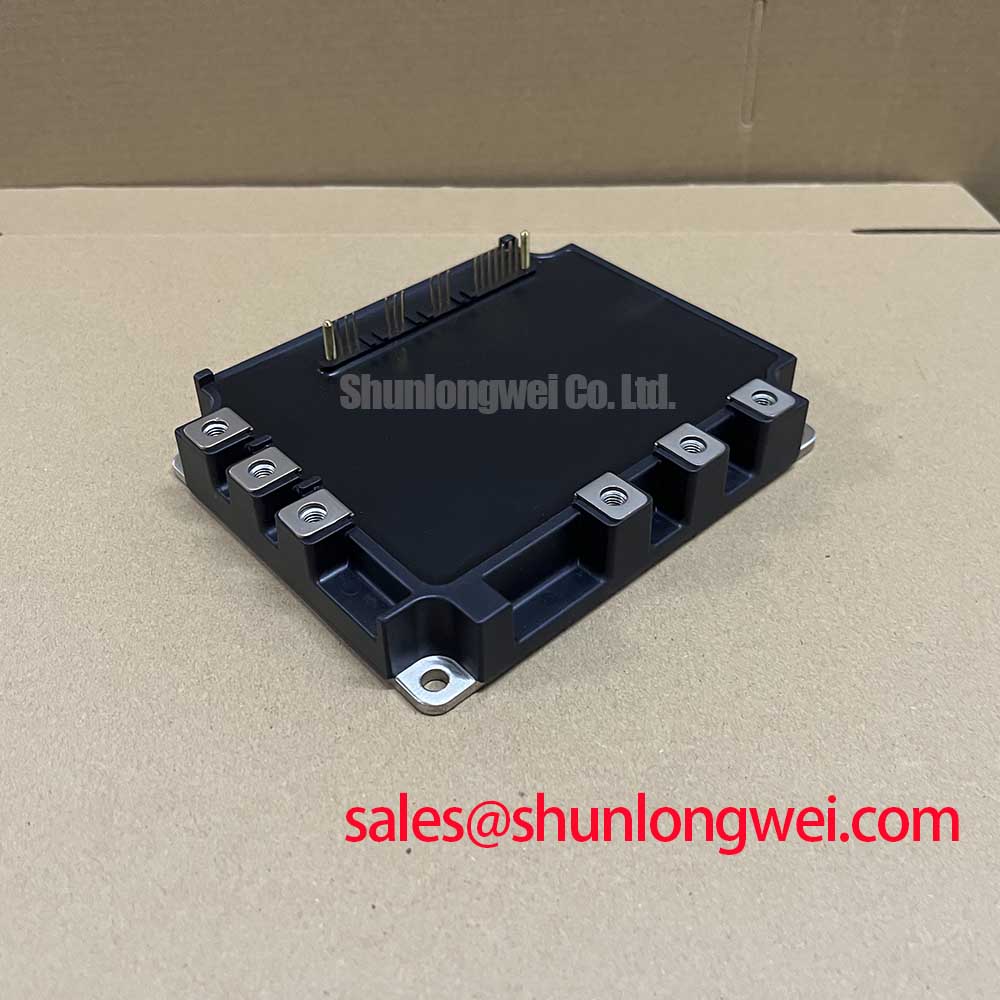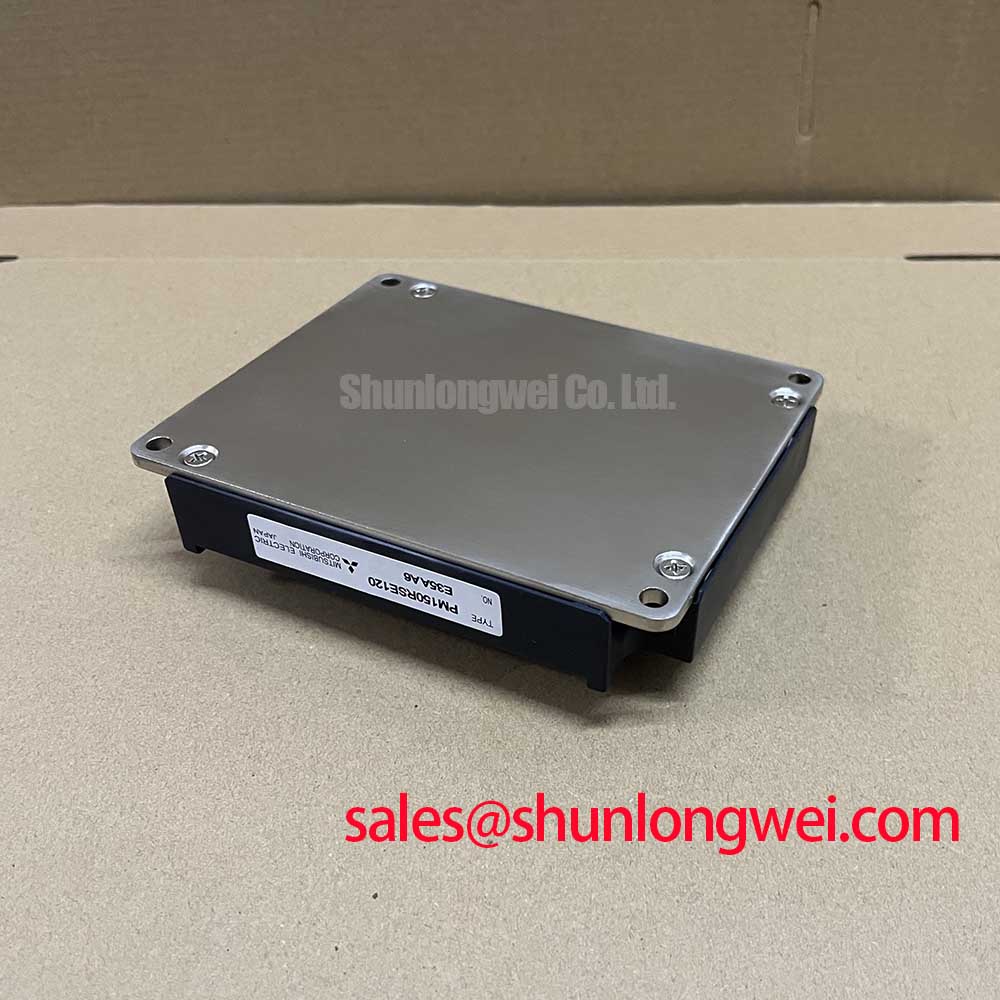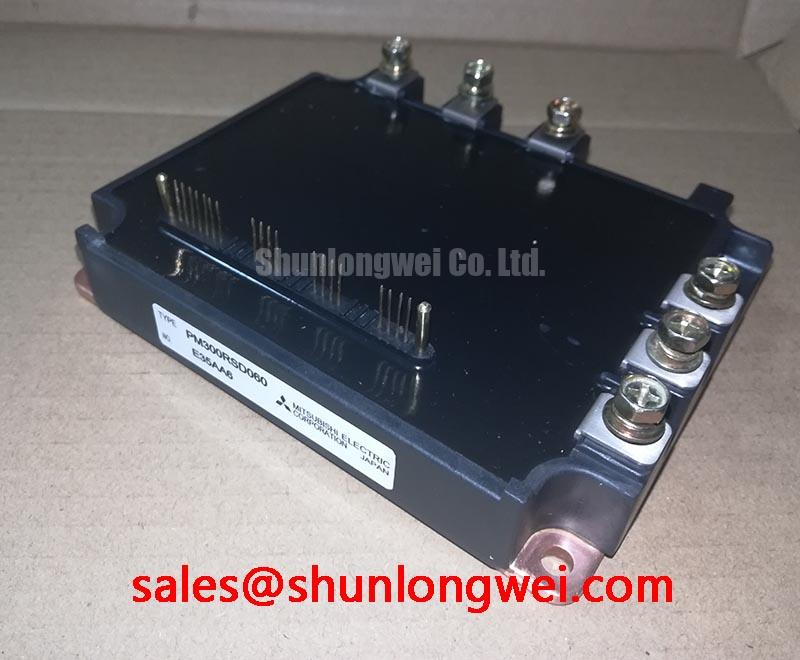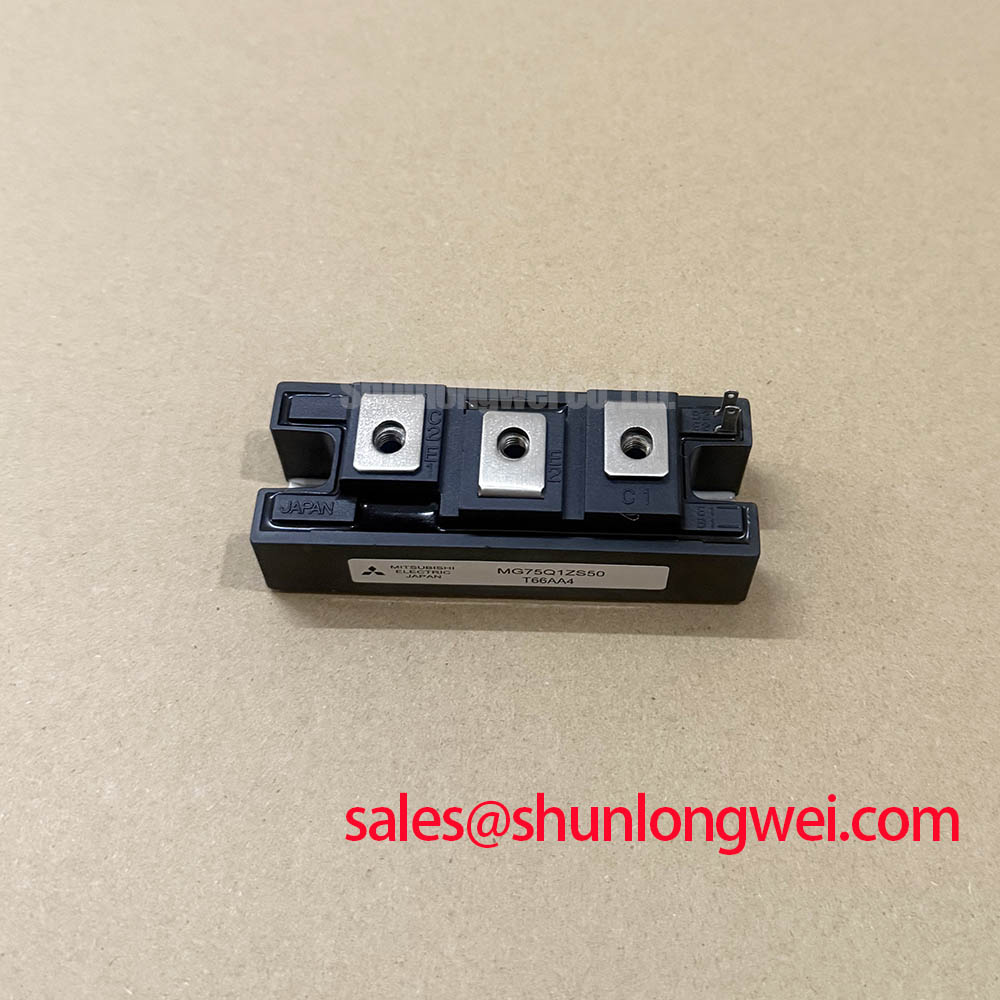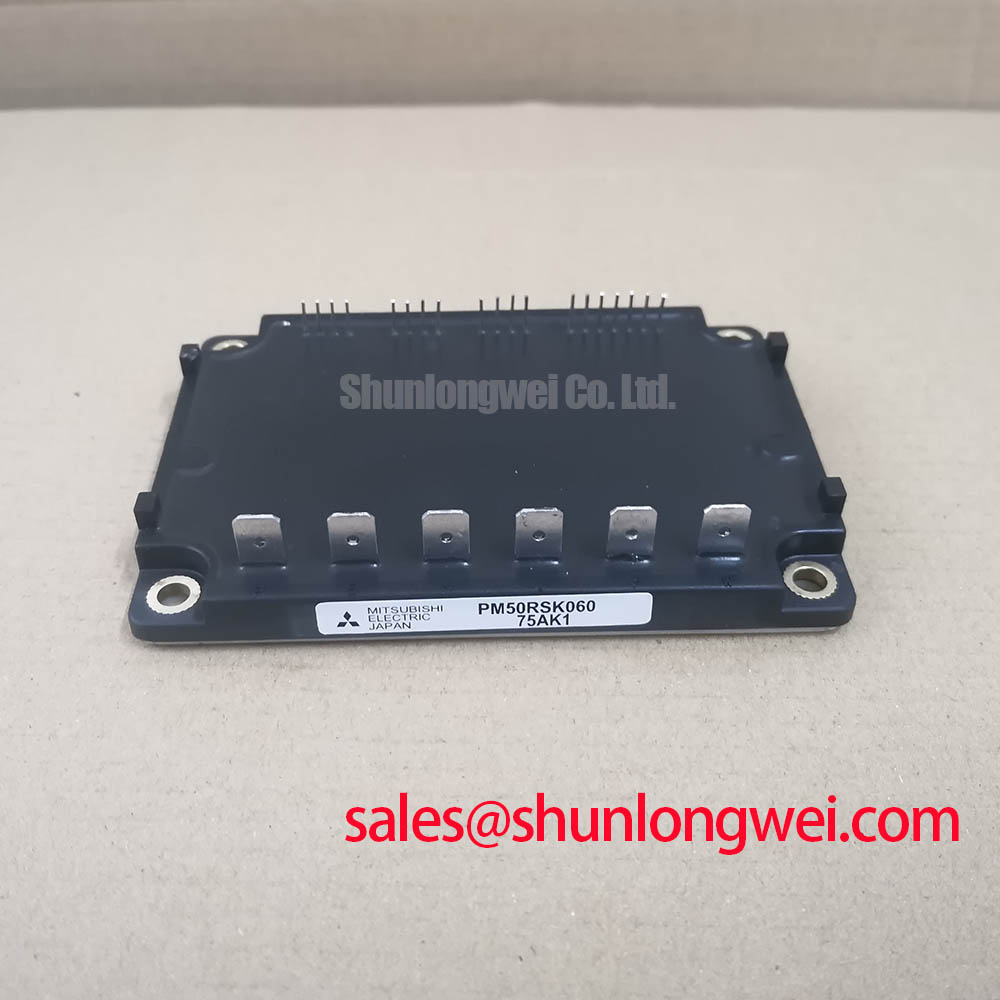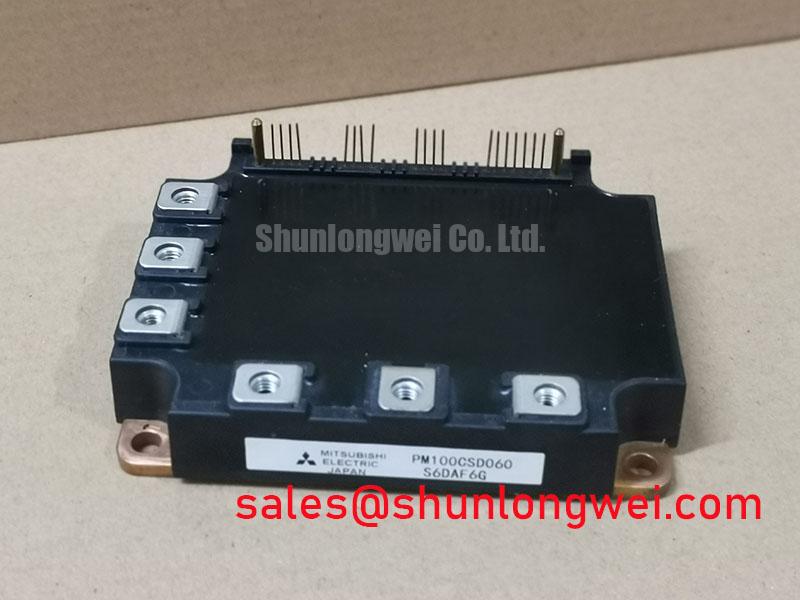Content last revised on November 18, 2025
Mitsubishi PM150RSE120: An In-Depth Engineering Review of the 1200V/150A R-Series Intelligent Power Module
Introduction: A Synopsis for System Architects
Integrated Protection as the Cornerstone of System Reliability
The Mitsubishi PM150RSE120 is an R-Series Intelligent Power Module (IPM) that delivers robust power conversion through comprehensive, on-board protection and control. With its core specifications of 1200V | 150A | Integrated SC/OT/UV Protection, this module provides two critical engineering benefits: drastically simplified gate drive design and enhanced operational reliability. It directly addresses the need for fail-safe operation in high-power motor control systems by integrating the essential protection circuits that designers would otherwise have to implement externally. Best fit for industrial motor drives up to 45kW, this IPM offers a streamlined path to developing highly reliable and compact inverter systems.
Key Parameter Overview
Decoding the Specs for Simplified and Robust Inverter Design
The technical specifications of the PM150RSE120 are foundational to its performance in demanding power systems. The parameters below are organized to provide a clear view of its electrical characteristics, protection capabilities, and thermal performance, which collectively contribute to system reliability and efficiency.
| Parameter Group | Specification | Value | Engineering Significance |
|---|---|---|---|
| Inverter Section | Collector-Emitter Voltage (Vces) | 1200 V | Provides a substantial safety margin for applications on 400V to 575V AC lines, ensuring resilience against voltage transients. |
| Collector Current (Ic) | 150 A | Enables control of high-power industrial motors, suitable for a wide range of variable frequency drive and servo applications. | |
| Performance Metrics | Collector-Emitter Saturation Voltage (VCE(sat)) | 1.75V (Typ) / 2.25V (Max) @ 150A, Tj=125°C | A low saturation voltage directly translates to lower conduction losses. This is akin to having less friction in a mechanical system, resulting in less wasted energy as heat and improving overall system efficiency. |
| Maximum Junction Temperature (Tj max) | 150°C (Operating) / 175°C (Short Term) | High temperature tolerance allows for robust operation in thermally demanding environments and provides headroom during peak load conditions. | |
| Control & Protection | Control Supply Voltage (Vcc) | 15 V | Standard logic-level supply voltage simplifies power architecture within the control board. |
| Built-in Protections | Short-Circuit (SC), Over-Temperature (OT), Under-Voltage (UV) | Integrates a complete safety net, protecting the IGBTs from catastrophic failure modes. This significantly reduces external component count and accelerates development time. | |
| Isolation Voltage (Viso) | 2500 Vrms (for 1 minute) | Ensures high galvanic isolation between the high-power stage and the low-voltage control logic, critical for operator safety and meeting regulatory standards like IEC 61800-5-1. |
Download the PM150RSE120 datasheet for detailed specifications and performance curves.
Application Scenarios & Value
Achieving System-Level Benefits in Industrial Motor Control
The PM150RSE120 is engineered specifically for three-phase power conversion systems where reliability and uptime are paramount. Its primary application is in industrial Variable Frequency Drive (VFD) systems, which are the backbone of modern automation for controlling pumps, fans, conveyors, and machine tools. In a typical VFD, the motor can experience a stall or a phase-to-phase short circuit. Without adequate protection, this event can cause destructive current levels that destroy discrete IGBTs in microseconds. The PM150RSE120's integrated short-circuit (SC) protection autonomously detects this condition and initiates a safe shutdown, sending a fault signal back to the main controller. This self-preservation capability prevents catastrophic failure, simplifies the design of protective circuitry, and enhances the overall robustness of the VFD.
Further applications include servo drives for robotics and CNC machines, uninterruptible power supplies (UPS), and commercial HVAC systems. In each of these scenarios, the module's integrated nature reduces design complexity, shrinks the PCB footprint, and improves manufacturing consistency compared to solutions built from dozens of discrete components. While this model is well-suited for systems requiring a 150A capability, for lower-power designs, the related PM100RSE120 offers similar integrated features with a 100A rating.
Frequently Asked Questions (FAQ)
Engineering Queries on the PM150RSE120
How do the integrated protection features in the PM150RSE120 simplify the gate drive design process?
The integrated protections for short-circuit, over-temperature, and under-voltage eliminate the need for complex and sensitive external monitoring circuits. Designers do not need to implement discrete desaturation detection for short-circuit protection or place thermistors and develop corresponding monitoring logic. This integration reduces component count, simplifies PCB layout, and removes multiple potential points of failure, directly translating to a more reliable system and a faster time-to-market.
What is the function of the fault output (Fo) signal and how should it be used in a system?
The fault output pin is an open-collector signal that goes to a low state whenever an internal protection event (SC, OT, or UV) is triggered. This signal should be connected to an interrupt pin on the system's microcontroller or SoC. Its primary function is to provide immediate diagnostic feedback, allowing the system controller to halt all PWM signals, engage safety protocols (like a mechanical brake), and log the specific fault type for maintenance purposes. This enables intelligent fault handling rather than just a system shutdown.
Application Vignette
Enhancing VFD Reliability Under Motor Stall Conditions
Consider a heavy-duty conveyor system powered by a 45kW induction motor controlled by a VFD. A mechanical jam causes the motor to stall abruptly. In a VFD using discrete IGBTs, this stall condition creates a near short-circuit, causing current to spike uncontrollably. The system's reaction speed is limited by the external current sensors and the microcontroller's response time. A delay of even a few microseconds can lead to thermal runaway and explosive failure of the power switches.
By designing the VFD with the PM150RSE120, the outcome is fundamentally different. The moment the stall-induced overcurrent exceeds the module's predefined short-circuit threshold, the integrated protection logic inside the IPM takes immediate action. It performs a "soft" turn-off of the IGBTs within the module itself, independent of the external controller's response time. Simultaneously, it pulls the fault (Fo) pin low. This action is like an airbag deploying in a car; it's an autonomous, localized safety response that is far faster than relying on a central processor. The microcontroller, alerted by the fault signal, can then gracefully shut down the entire system. The result is a non-destructive shutdown, protecting the VFD, the motor, and ensuring a faster and safer recovery once the mechanical jam is cleared.
Industry Insights & Strategic Advantage
Meeting the Demands of Industry 4.0 with Integrated Power Solutions
The trend towards Industry 4.0 places new demands on industrial equipment: greater connectivity, higher power density, and uncompromising reliability. The PM150RSE120 directly supports these objectives. Its high level of integration is a strategic advantage for manufacturers of industrial drives and power supplies. By consolidating the gate drive, protection, and power switching stages into a single, factory-tested component, it reduces supply chain complexity and manufacturing variables. This contributes to a lower Total Cost of Ownership (TCO), as development, assembly, and testing costs are significantly reduced. The reliability afforded by integrated protection ensures longer machine uptime, a critical metric in highly automated smart factories. This module represents a move away from component-level design towards a more efficient and reliable system-level approach, a key enabler for the next generation of industrial automation.
Design & Integration Support
Your Path to a More Reliable Power System
Integrating the PM150RSE120 effectively requires attention to thermal management, control interface, and power layout. Our engineering team is available to support your design process, offering expertise on topics ranging from heatsink selection to optimal PCB layout for minimizing noise and ensuring the integrity of control signals. For assistance in evaluating this Intelligent Power Module for your next project or to discuss your specific application requirements, please contact our technical support team.


